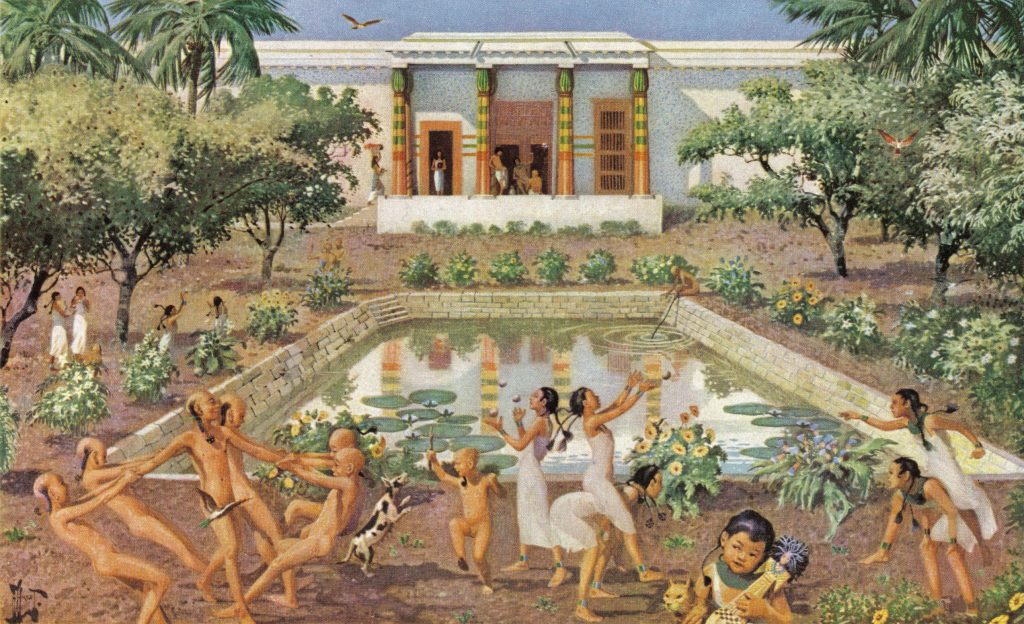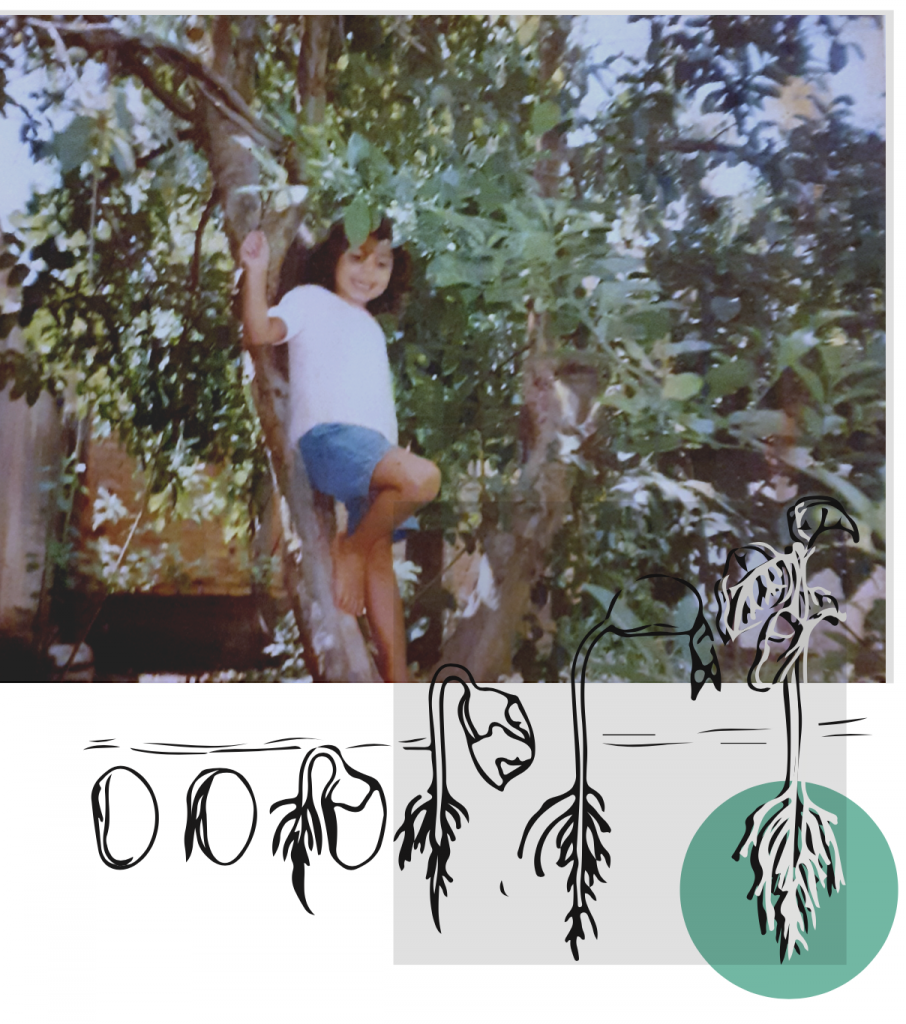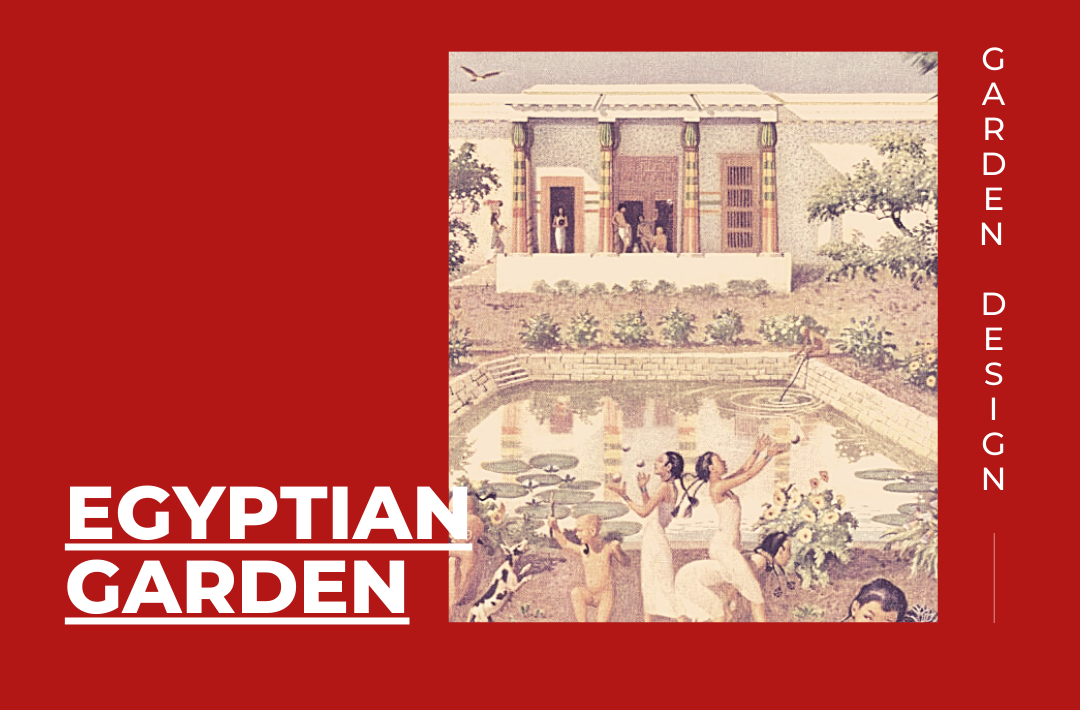I believe there’s a moment in everyone’s life when the bustling world becomes overwhelming, and we yearn for the serenity of being surrounded by nature (and pets). If you’re anything like me, you might be experiencing that moment right now. As I accumulate pots of indoor plants in my apartment, I find myself drawn to the world of flora, seeking not just their beauty, but also the knowledge they carry. It’s incredible how much significance is attached to plants – a fact made clear to me through my grandmother’s wisdom, a memory of a time when identifying a healthy plant was as simple as reading a single leaf.

In this pursuit, I realized that to truly understand where we’re headed, we must first grasp where we came from. Let’s embark on a journey through the history of garden design, tracing it back to the ancient times of Egypt, where the mighty Nile River was the cradle of lush and purposeful greenery.
The Gift of the Nile: The Greek historian Herodotus described Egypt as the “Gift of the Nile,” and rightly so. The river’s bounteous waters were pivotal not only for transportation and sustenance but also for agriculture. Ingenious technologies like irrigation, drainage, and ditches turned previously inhospitable lands into fertile grounds.
The ancient Egyptians utilized these advancements to craft gardens abundant with a variety of plants, fruits, and vegetables. These gardens were pioneers in intermingling culinary, medicinal, and ornamental plants, creating an environment that celebrated the beauty of nature and its many uses.

Harmony in Geometry: What strikes me as fascinating is that despite the amalgamation of species, Egyptian gardens were far from haphazard. Meticulous planning went into their construction, resulting in geometric layouts that were both visually appealing and functional. The heart of these gardens often featured rectangular tanks that served as fish ponds and maintained a refreshing ambience, aside from adding to their aesthetic charm. Trees like palms, sycamores, mandrakes, and shrubs embraced these tanks, creating a harmonious setting. These geometric designs weren’t just about aesthetics but were influenced by their deep connection with astrology and cardinal points.
A Legacy of Leisure and Beauty
Beyond their utilitarian purposes, these ancient gardens held a significant place in daily life. They were sanctuaries of leisure and conviviality, spaces designed for unwinding and spending quality time outdoors. As I reflect on these aspects, I can’t help but draw parallels to the gardens of my Brazilian heritage.

Memories of gardens transport me to my grandmother’s own garden in Minas Gerais, the photo above: my favourite guava tree. Much like the Egyptian gardens, these spaces are hubs of family gatherings and conversations. Here, the atmosphere perpetually radiates the warmth of summer, nurturing a diverse range of plants – from medicinal herbs to fruit-bearing trees – all flourishing amidst vibrant shades of green.
The echoes of ancient garden design, characterized by the fusion of beauty and purpose, are evident in today’s landscapes. As I nurture my growing collection of indoor plants, I’m reminded that amid the chaos of life, there exists a timeless sanctuary in the form of a garden – a place of tranquillity, beauty, and connection.
References:
- Open Edu. “Hunting in the Marshes.” [Image] Available at: https://www.open.edu/openlearn/ocw/mod/oucontent/view.php?id=51847§ion=5
- Crystalinks. “Trees in Ancient Egypt.” [Image] Available at: https://www.crystalinks.com/egyptrees.html
- Facts and Details. “Palm Trees.” [Image] Available at: http://factsanddetails.com/world/cat56/sub403/entry-6121.html


Leave a Reply